Discover the essential guide to baby shoe sizes, ensuring proper fit and comfort. Learn how to measure foot length accurately and use size charts for the best fit.
Understanding the Importance of Proper Shoe Fit for Babies
Proper shoe fit is crucial for babies’ comfort and foot development. Ill-fitting shoes can cause discomfort, blisters, and even hinder natural growth. Tight shoes may restrict toe movement, potentially leading to deformities, while overly loose shoes can cause tripping hazards. Ensuring the right fit promotes healthy foot development, supports balance, and enhances mobility. As babies grow rapidly, regular checks and size adjustments are essential to accommodate their changing foot measurements. Properly fitted shoes also prevent foot fatigue, allowing babies to explore and play without discomfort, which is vital during their early developmental stages.
How to Measure Your Baby’s Foot Length
Gently place your baby’s foot flat on the floor, measure from the heel to the longest toe using a ruler, and refer to a size chart for accurate fitting.
Step-by-Step Guide to Accurate Measurement
Ensure your baby is calm and lying or sitting comfortably. Place their foot flat on the floor or a sturdy surface to avoid curvature.
Use a ruler or measuring tape to measure the foot length from the heel to the tip of the longest toe.
Record the measurement in centimeters or inches. Repeat for both feet, as sizes may differ slightly.
Compare the measurements to a baby shoe size chart, ensuring the shoe size aligns with the foot length.
Re-measure every few months, as babies’ feet grow quickly. Always allow a small gap (about 0.5 cm) for comfort and growth.
This method ensures a precise fit, promoting healthy foot development and comfort for your baby.
Tools and Techniques for Measuring
Accurate measurement requires the right tools and techniques. Use a flexible ruler or measuring tape to capture the foot’s length from heel to the longest toe. Ensure the baby is calm and their foot is flat on a firm surface. A Brannock device, commonly used in shoe stores, can also provide precise measurements. For younger infants, place their foot on a piece of paper and trace the outline to measure later. Always measure both feet, as sizes may differ slightly. Regular re-measurement ensures the best fit as feet grow rapidly.
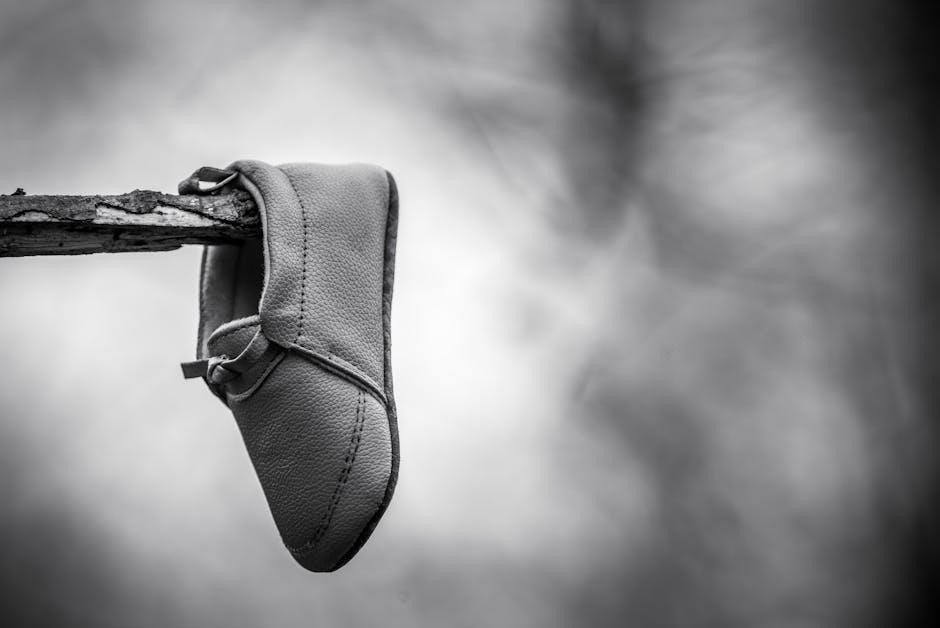
Baby Shoe Size Charts: A Comprehensive Overview
Baby shoe size charts correlate foot length with specific sizes, ensuring proper fit. They vary by brand, but most provide a clear guide for accurate sizing.
How Shoe Size Correlates with Foot Length
Shoe size is directly determined by measuring a baby’s foot from the heel to the longest toe. This length is then matched to a size chart, ensuring proper fit.
Accurate measurement is crucial, as even small differences can affect comfort. Most charts provide a clear correlation, though variations exist between brands, making it essential to refer to specific guides. Proper fit ensures healthy foot development and prevents discomfort. Using a size chart tailored to your baby’s foot length guarantees the best fit for their growing feet. Always measure carefully and consult the chart for optimal results. This approach ensures shoes support, rather than restrict, your baby’s natural growth.
Differences in Size Charts Across Brands
Shoe size charts vary significantly between brands, as each may have its own measurement standards. While some brands offer half sizes for a precise fit, others may have wider or narrower styles. Additionally, the correlation between foot length and shoe size can differ slightly, depending on the brand’s design approach. Parents should always consult the specific brand’s size chart to ensure accuracy. Some brands, like Carter’s, offer detailed charts, while others, like Robeez, focus on soft, flexible designs that accommodate growth. It’s essential to check each brand’s guidelines for the best fit. This variation highlights the importance of not assuming sizes are universal across brands. Always measure and compare using the brand’s specific chart for optimal results. This ensures shoes are neither too tight nor too loose, supporting healthy foot development. By understanding these differences, parents can make informed choices tailored to their baby’s needs. Proper fit is crucial, and brand-specific charts help achieve this goal.
Factors Affecting Baby Shoe Size
Growth rates, foot shape, and developmental stages significantly influence shoe size. As babies grow, their foot length and width change, requiring frequent size adjustments for proper fit.
Growth Rates and Developmental Stages
Baby shoe size is heavily influenced by growth rates and developmental stages. Infants experience rapid foot growth, requiring frequent size adjustments. During the first year, babies often outgrow shoes every few months. Developmental milestones, like crawling and walking, also impact shoe fit. As babies transition to toddlers, their foot shape and size stabilize slightly, but growth spurts remain common. Regular measurements and consultations with size charts ensure proper fit. Age-related size correlations vary, but monitoring growth patterns helps in selecting appropriate sizes. Seasonal and brand-specific factors further tailor the fit for different stages of development.
Foot Shape and Toe Alignment
A baby’s foot shape and toe alignment play a crucial role in determining the right shoe size. Feet come in various shapes, and some babies may have wider or narrower toes. Proper toe alignment ensures comfort and prevents issues like overlapping toes. Shoes should accommodate the natural shape of the foot, allowing toes to lie flat without pressure. Rounded toe boxes are ideal for preventing toe compression. Additionally, some brands offer customizable fits to suit different foot shapes. Ensuring proper alignment supports healthy foot development and prevents discomfort or long-term issues. Regular checks and proper fitting are essential for optimal comfort and growth.
How to Choose the Right Shoe Size for Your Baby
Measure your baby’s foot length, consult a size chart, and ensure a snug fit with room for growth. Consider features like support, comfort, and breathability for optimal fit.
Features to Look for in Baby Shoes
Look for soft, breathable materials that allow natural foot movement. Ensure proper support with a sturdy sole and cushioning. Adjustable straps provide a secure fit, while flexible designs promote natural foot development. Opt for shoes with non-slip soles for better traction. Prioritize lightweight and durable options that adapt to growth. These features ensure comfort, support, and safety, fostering healthy foot growth and exploration.
Trying Shoes On: What to Check
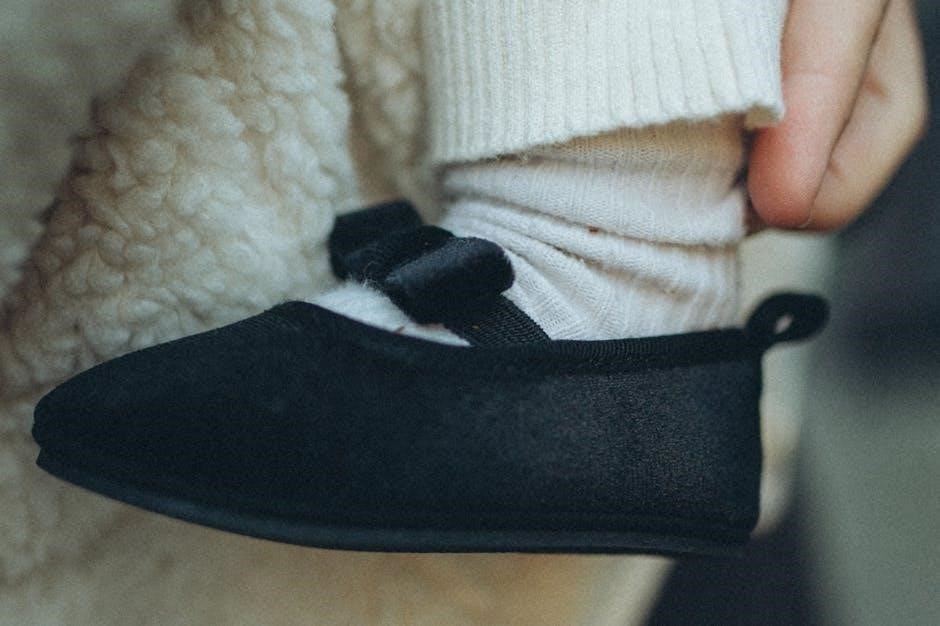
When trying shoes on your baby, ensure there is about a finger width of space between the heel and the shoe’s back. Check for a snug fit around the midfoot and heel, with enough room for the toes to wiggle. The shoe should provide adequate support without being too tight. Look for soft, breathable materials and a flexible sole that allows natural foot movement. Adjustable straps can help secure the fit. Ensure the shoe is lightweight and comfortable, promoting healthy foot development and ease of movement.
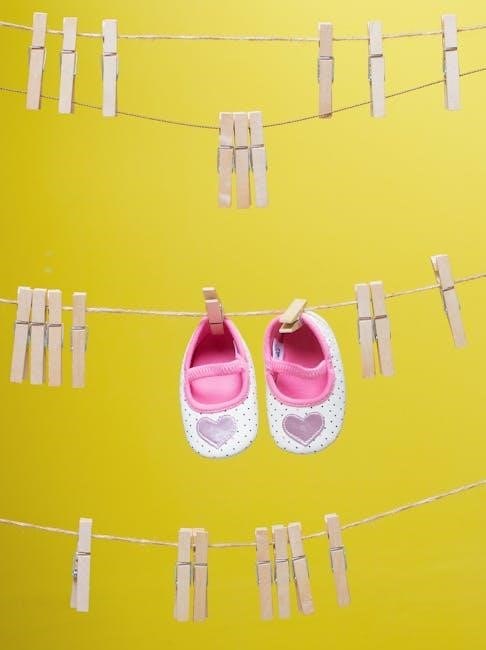
Benefits of Different Types of Baby Shoes
Explore how different baby shoe types promote comfort and healthy growth. Barefoot shoes support natural movement, while seasonal options offer protection and breathability for various conditions.
Advantages of Barefoot Shoes
Barefoot shoes offer numerous benefits for babies, promoting natural foot movement and muscle development. They allow toes to flex and grip, enhancing balance and coordination. Lightweight and breathable designs keep feet cool, reducing sweat buildup. These shoes encourage a natural gait, preventing potential foot deformities. Studies suggest that barefoot time improves sensory feedback, aiding in motor skill development. Parents often opt for barefoot shoes as they mimic walking barefoot, providing comfort and flexibility. This style is ideal for indoor use and early walkers, fostering healthy foot growth and strength.
Seasonal Shoes: Sandals and Boots
Seasonal shoes like sandals and boots are perfect for different weather conditions. Sandals provide breathability and flexibility, ideal for warm weather, while boots offer warmth and support during colder months. Look for soft, lightweight materials like leather or suede for comfort. Sandals with secure straps ensure a proper fit, while boots with waterproof features protect tiny feet outdoors. Both styles should allow for natural foot movement and growth. Choosing the right seasonal shoes ensures your baby stays comfortable and supported throughout the year, no matter the occasion or weather.
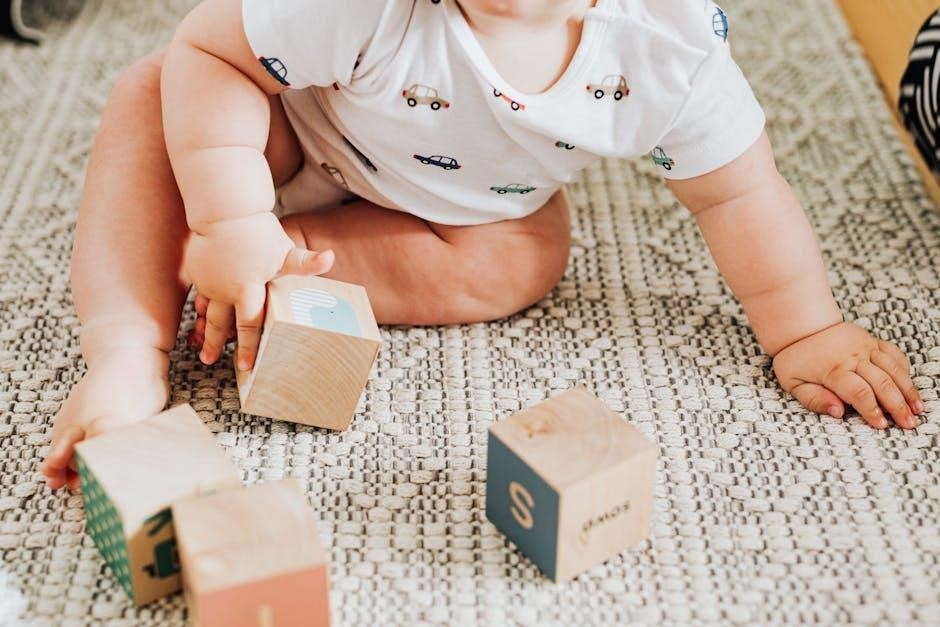
Signs of Improper Shoe Fit
Look for redness, blisters, or discomfort. If shoes are too tight or too loose, they can hinder movement and cause irritation, affecting your baby’s comfort and development.
When to Consider a Larger Size
If your baby’s toes are curling or there’s visible redness around the heel or toes, it’s time for a larger size. Look for signs like blisters or discomfort during walks. Babies grow rapidly, so regular checks are essential. Use the finger-width rule: ensure there’s about 1 cm of space between the shoe and heel. If shoes feel tight or your baby’s foot exceeds the size chart, consider moving to the next size. This ensures proper comfort and supports healthy foot development, especially during growth spurts.
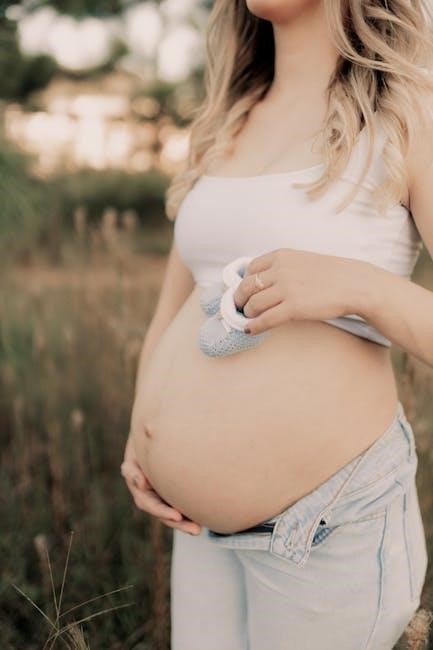
Baby Shoe Size Chart by Age
A baby shoe size chart by age helps estimate sizes based on developmental stages. Newborns (0-3 months) start at size 1, growing into larger sizes as they age.
Correlating Age with Shoe Size
A baby shoe size chart by age helps parents determine the appropriate size based on their child’s developmental stage. Newborns (0-3 months) typically wear size 1, while infants (3-6 months) graduate to size 2. Toddlers (6-12 months) often require size 3 or 4, and older toddlers (1-2 years) may need sizes 5 or 6. These correlations provide a general guideline, though individual growth rates and foot shapes can vary. Always measure your baby’s foot length and consult a size chart for the most accurate fit, as sizes may differ slightly between brands.
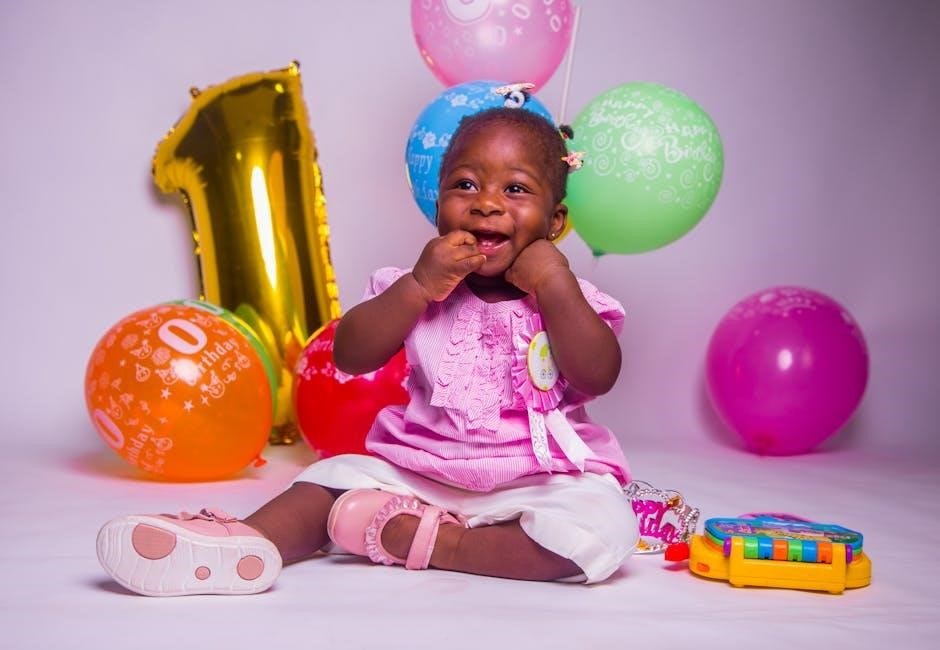
Brand-Specific Baby Shoe Size Charts
Popular brands like Carter’s and Robeez offer detailed size charts tailored to their designs. Carter’s sizes range from 0 to 6, while Robeez provides precise fits for tiny feet.
Popular Brands and Their Sizing
Leading brands like Carter’s, Robeez, and Clarks offer tailored sizing charts for baby shoes. Carter’s provides sizes 0 to 6, while Robeez focuses on precise fits for tiny feet. Clarks offers half sizes and width options for better comfort. Nike and Adidas also cater to babies with sporty designs. Each brand may vary slightly, so parents should refer to specific charts. For example, Carter’s includes half sizes in walking shoes for a perfect fit. Always check the brand’s sizing guide to ensure the best fit for your baby’s growing feet.